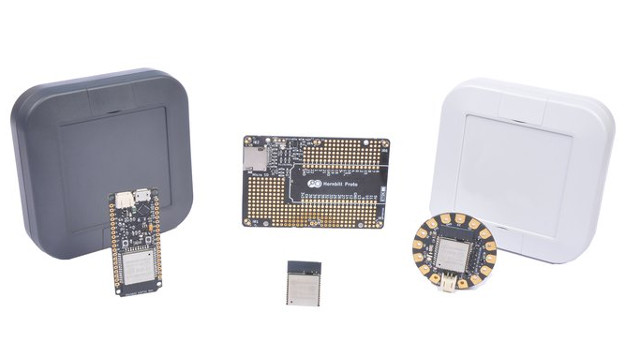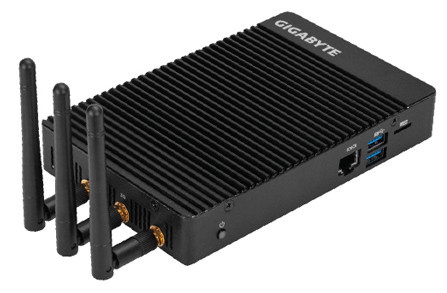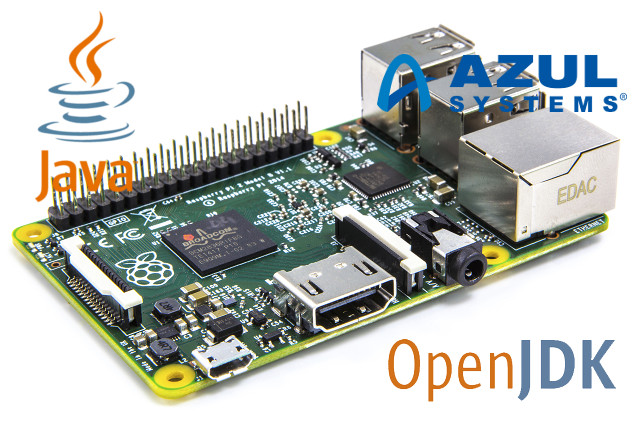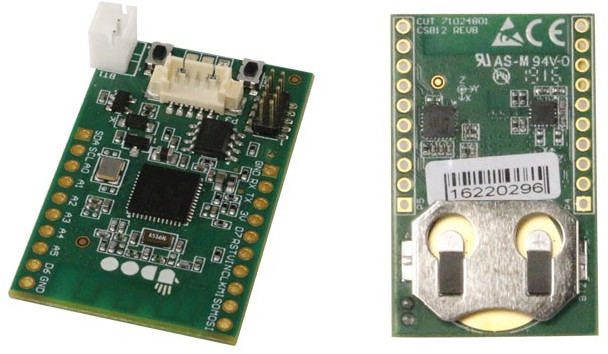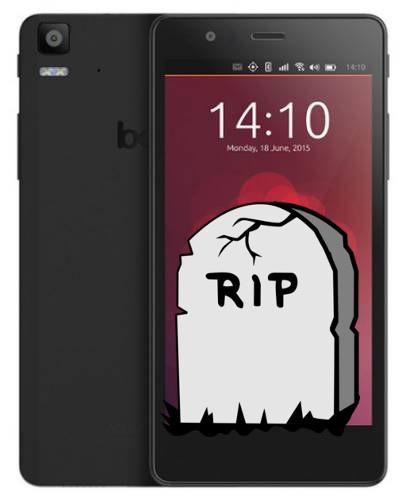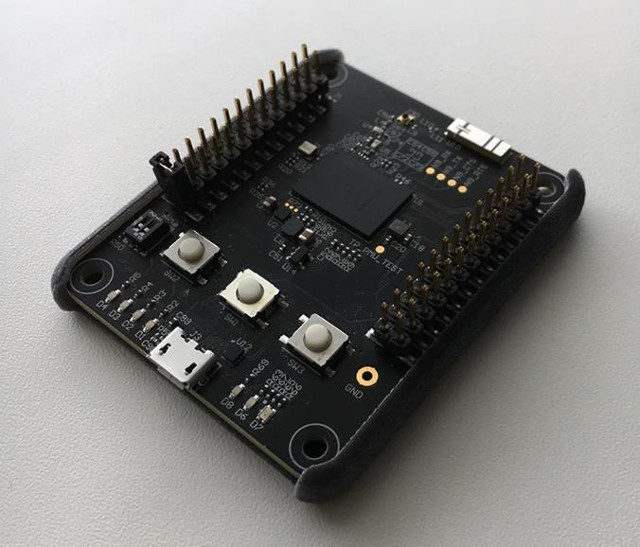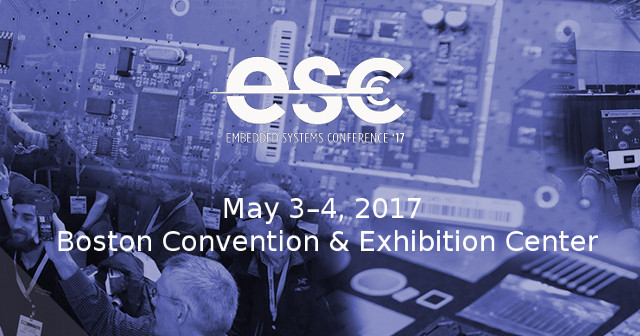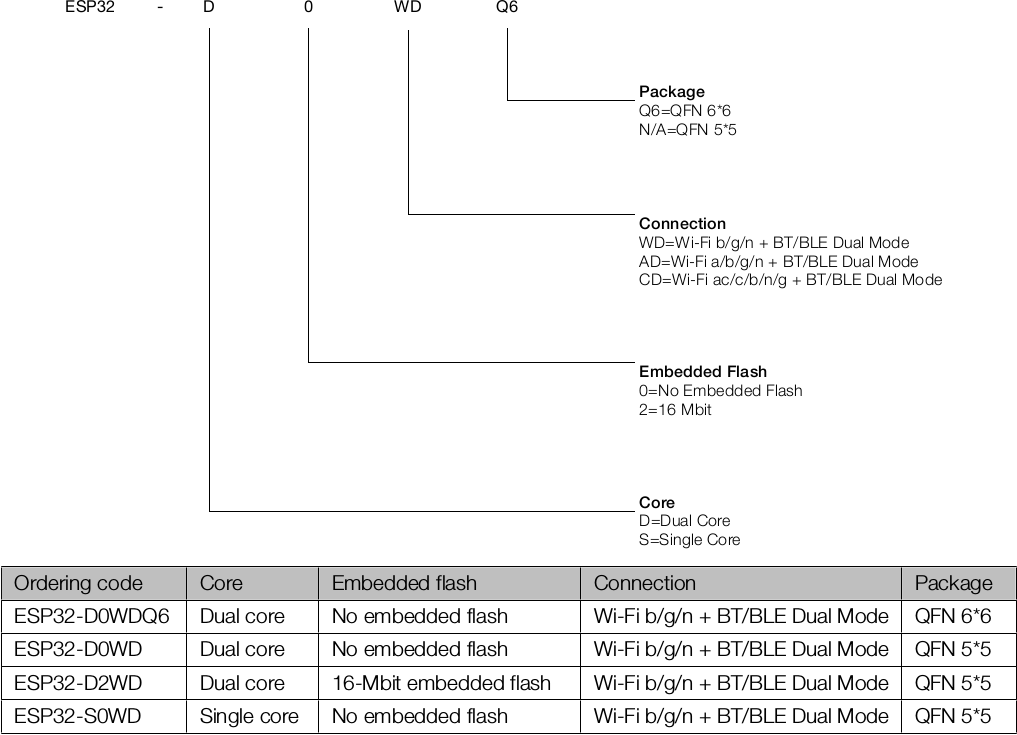While there are plenty of ESP32 development boards, and prices have recently plummeted, getting a case for your project can still be a problem especially if you plan to use it outdoor, as you need to protect your hardware from rain and dust. Hornbill project offers two ESP-WROOM-32 based boards, a prototype board, and an IP67 certified case that could be useful for outdoor use. Hornbill ESP32 Development Boards Let’s start by checking the boards available starting with ” Hornbill ESP32 Dev” board with the following specs: ESP-WROOM-32 module with WiFi, Bluetooth LE, FCC, CE, IC, MIC (Telec), KCC, and NCC certifications I/O headers 2x 19-pin headers with GPIOs, I2C, UART, SPI, ADC, DAC, touch interface, VN/VP, 5V, 3.3V and GND Breadboard-friendly Debug – Built-in CP21XX USB-to-serial Power Supply – 5V via micro USB port, battery header + single cell LiPo charger Dimensions – TBD ESP32 Minima is also based […]
GIGABYTE BRIX IoT Apollo Lake Fanless mini PC is Designed for the Internet of Things, Digital Signage, Thin Clients
GIGABYTE has unveiled BRIX IoT mini PC powered by either Intel Celeron N3450 or Pentium N4200 processor both part of Intel’s Apollo Lake family, and as the name implied the devices target Internet of Things applications. GIGABYTE BRIX IoT specifications: SoC (one or the other) Intel Celeron N3450 quad core processor @ up to 2.2GHz with Intel HD graphics 500 (6W TDP) Intel Pentium N4200 quad core processor @ up to 2.5GHz with Intel HD graphics 505 (6W TDP) System Memory – 2x SO-DIMM DDR3L slots @ 1333/1600/1866 MHz up to 8GB Storage – 1x M.2 slot, 1x micro SD slot, optional 32 or 64GB eMMC flash Connectivity Dual Gigabit Ethernet via Realtek RTL8111HS Intel Dual band Wireless-AC 3165 module with two SMA antenna connectors 3G via mini PCIe slot and SIM card slot with one SMA antenna connector Video Output – Dual HDMI 1.4b up to 3840×2160 @ 30 […]
Azul Systems’ Zulu Embedded is a Build of OpenJDK for ARM, MIPS, PowerPC, and x86 Compliant with Java SE standard
Yesterday as I wrote about the Embedded Systems Conference 2017 schedule I came across a potentially interesting talk entitled “Building A Brain With Raspberry Pi and Zulu Embedded JVM” by Azul Systems that will explain how to build a brain emulator using a cluster of Raspberry Pi boards. I wanted to find more about it, but I have not been able to find any details about the project/demo at this stage. However, I could still learn a bit more about Zulu Embedded, which is said to be an open source Java Virtual Machine based on OpenJDK, compliant with Java SE standard, working on 32-bit & 64-bit ARM & x86, MIPS, and PowerPC, as well as multiple operating systems. Some of the key features of Zulu Embedded include: Java Support – Java 6, 7, 8, and 9 when available Java Configurations – Headless, headful, or compact Java Compact Profiles Hardware – […]
UDOO BLU and BLU SENSE IoT Modules Integrate Bluetooth LE, Zigbee, and 6LOWPAN Connectivity
UDOO is known for their Linux boards based on NXP and Intel processors for makers and the education market such as UDOO NEO or UDOO x86, but the company has now developed UDOO BLU and BLU SENSE battery powered modules based on Texas Instruments CC2650 ARM Cortex M3 microcontroller, both with Bluetooth LE, Zigbee, and 6LOWPAN connectivity, and the SENSE model adds some extra sensors. UDOO BLU and BLU SENSE specifications: Wireless MCU – Texas Instruments CC2650 ARM Cortex M3 MCU @ 48 MHz with 128KB flash, 8KB SRAM with 2.4 GHz radio Connectivity – Bluetooth Low Energy (BLE), ZigBee, 6LoWPAN Sensors (BLU SENSE only) – NXP FX0S8700CQ accelerometer & magnetometer sensor, NXP FXAS21002C gyroscope & temperature sensor Expansion 1x 5-pin sensors Snap-In I2C connector for UDOO Bricks 2x 10-pin headers with 8x Digital GPIOs, 6x ADCs, 1x I2C, 1x SPI, 1x UART Misc – 3x User Configurable LEDs (Red, […]
Canonical Refocuses Ubuntu Development Efforts on Cloud and IoT, Drops Convergence and Mobile
Mark Shuttleworth has published a new blog post in Ubuntu Insights, and this is not all good news, as the title “Growing Ubuntu for Cloud and IoT, rather than Phone and convergence” implies. Canonical has decided to drop Unity8, and replace it with Gnome in Ubuntu 18.04, and by extension stop any investment in Ubuntu phone and convergence. The main reasons given for the drop were that few commercial partners were interested in the project, preferring to stick with the most popular mobile operating systems like Android, and the community did not see the work as innovation, but instead fragmentation, probably referring to the Mir vs Wayland saga. On the better news, Canonical is still committed to work on Ubuntu desktop, and will focus on the Cloud and IoT applications such as automotive, robotics, networking, and machine learning, for which the company has gone well so far with multiple commercial […]
Microsoft is Working with Mediatek on Project Sopris Secure WiFi MCU
There are serious security issues with the Internet of Things at all levels: hardware, software, network, and end-users. Microsoft Research NExT Operating Systems Technologies Group has been tasked with “exploring the goal of securing the vast number of low cost Internet connected devices coming online” with Project Sopris. They have shared their first technical report that identifies “seven properties of highly secure devices”, and describes their experiments towards designing microcontroller based prototype devices adapted from Mediatek MT7687 MIPS microcontroller, and exhibiting those seven properties. The seven properties identifies by Microsoft team include: Hardware-based Root of Trust – Unforgeable cryptographic keys generated and protected by hardware. Physical countermeasures resist side-channel attacks. Small Trusted Computing Base – Private keys stored in a hardware-protected vault, inaccessible to software. Division of software into self-protecting layers. Defense in Depth – Multiple mitigations applied against each threat. Countermeasures mitigate the consequences of a successful attack on […]
Embedded Systems Conference 2017 Schedule – May 3-4
The Embedded Systems Conference 2017 will take place over two days in Boston, US on May 3-4, and the organizers have published the schedule of the event. Even if you’re not going to attend, you’ll often learn something or find new information by just checking out the talks and abstracts, so I’ve created my own virtual schedule with some of the most interesting sessions. Wednesday, May 3rd 08:00 – 08:45 – Combining OpenCV and High Level Synthesis to Accelerate your FPGA / SoC EV Application by Adam Taylor, Adiuvo Engineering & Training Ltd This session will demonstrate how you can combine commonly used Open source frameworks such as OpenCV with High Level Synthesis to generate a embedded vision system using FPGA / SoC. The combination of OpenCV and HLS allows for a much faster algorithm development time and consequently a faster time to market for the end application. 09:00 – 09:45 […]
New Espressif ESP32 Single and Dual Core Processors in 5x5mm Package, Optional Embedded Flash Coming Soon
Espressif ESP32 was launched last year as a dual core Tensila processor with WiFi and Bluetooth connectivity, relying on external flash for storage, and packaged into a QFN48 6x6mm package. Espressif recently updated ESP32 datasheet, and the guys at ESP32net noticed three new versions of the processor with a QFN48 5x5mm package, one version including 2 MBytes embedded flash, and another version with a single core. The three new versions of ESP32 all come with the same WiFi 802.11b/g/n ad Bluetooth 4.0 LE connectivity and a QFN 5×5: ESP32-D0WD dual core processor without embedded flash ESP32-D2WD dual core processor with 16 Mbit embedded flash ESP32-S0WD single core processor without embedded flash ESP32-D0WD different with ESP32-D0WDQ6 is only the smaller package, while ESP32-D2WD brings 2MB embedded flash too possibly lowering the price of current solution with external flash, and ESP32-S0WD might be closer to ESP8266 price thanks to its single core, […]


